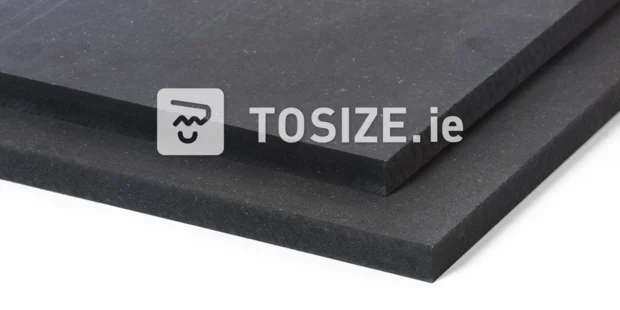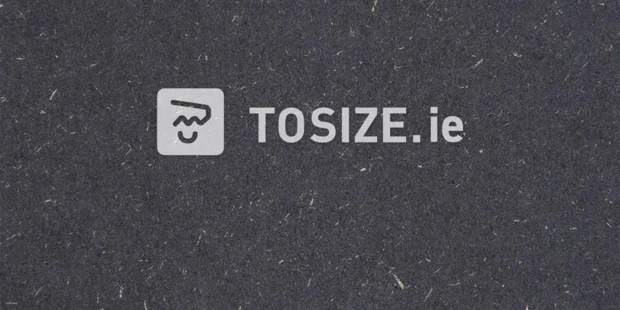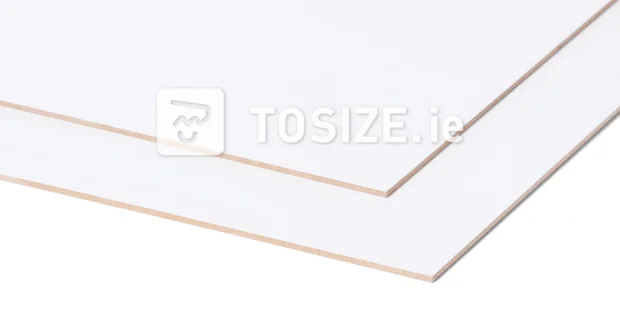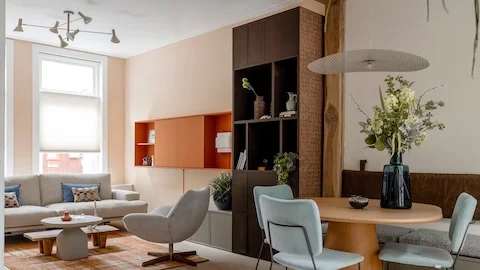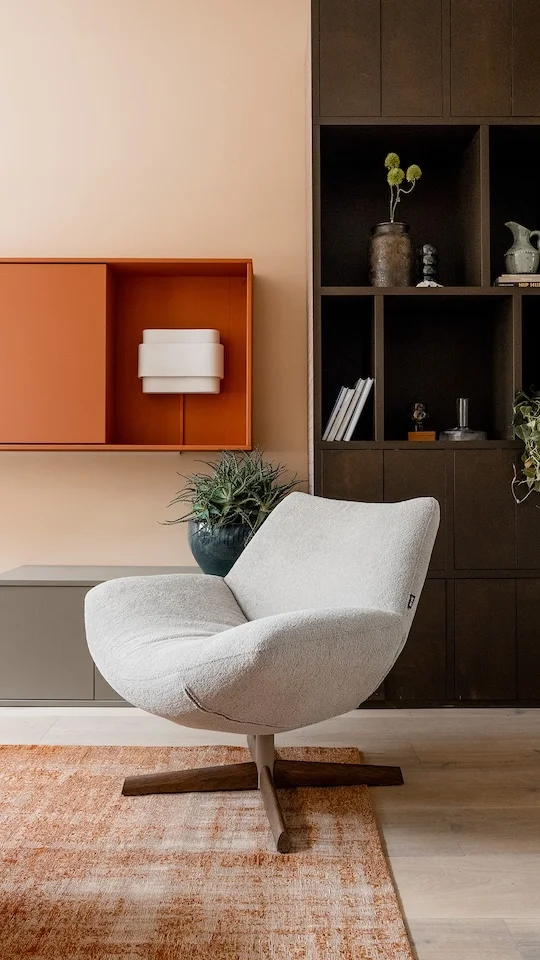HDF: what is it?
HDF is the abbreviation for High Density Fibreboard. An HDF board is the same as MDF in everything, but it has a higher density because the fibres are compressed under higher pressure. These fibreboards are very uniform wood-based board materials made from fine wood fibres. The very finely ground wood fibres are mixed with synthetic resin glue and compressed into a whole board. Where board materials with a homogeneous density distribution and a very stable surface are needed, HDF offers the solution.
The structure of HDF boards
HDF boards are characterized by their higher density compared to common MDF. In practice, this is 700 to 800 kg/m3. The product is compressed under higher pressure and contains more and smaller fibres. HDF boards therefore have higher bending strength, compressive strength and hardness than normal MDF, such as higher screw pull-out resistance and higher bending strength.
Characteristics of HDF
HDF board material offers many interesting advantages. Because HDF are manufactured boards, various properties have been added to the boards, creating a complete HDF family. Generally speaking, HDF boards are strong boards that can be used for many projects. In addition, it is highly machinable and easy to saw or mill to size. Both manually and by machine. So, it can easily be milled into the most diverse shapes.
In addition, this material does not splinter because it consists of a fibre structure that is very fine. You can use all joining systems for HDF boards, and almost all thicknesses of HDF are strong enough for structural interior applications.
Whereas wood and board materials can deform in humid conditions and temperature differences, HDF is one of the most stable board materials. Where timber panels, solid and plywood will warp in damp conditions and with temperature differences, HDF is minimally affected. However, the edges of HDF boards are more vulnerable to moisture than other board materials. This makes it important to give the edges extra attention and finish them with an edge sealer when choosing HDF board material.
In addition, HDF has a high bending strength, which also means the breaking point is very high. The breaking point is very high, and you benefit from exceptional wear resistance. Countersinking screws in MDF is also very easy.
Types of HDF
HDF can be ordered in different thicknesses. You can easily specify your desired thickness when configuring your board material. So you can be sure that the board material meets your requirements: both the size and thickness of the material. We have various thicknesses of MDF in our range. For example, we have HDF in 8 mm and 13 mm thickness. We offer HDF in the colour black and the product is cut to size for you free of charge!
View our range of HDF board material here:
DIY tips for fitting and finishing HDF
HDF is easy to machine and mill due to its high density! The high density also means that the material absorbs less paint. This makes HDF easier to paint compared to MDF.
HDF can easily be fixed by screwing. We would recommend keeping 25 millimetres away from the edges to minimize the risk of the product breaking or cracking.
Common uses for HDF
HDF is regularly used as the support for the top layer of a laminate floor. Due to its higher density, HDF is sound-absorbing. Another additional advantage of its higher density is that it is more moisture-resistant than MDF. The moisture-resistant nature in turn makes HDF a widely used material when realizing kitchen components such as kitchen cabinets. In addition to the above applications, HDF is also used for doors, furniture, wall and ceiling panels and in interior construction.
Alternatieven
A suitable alternative to HDF is, of course, MDF! As MDF is less paintable than HDF, MDF film is a suitable alternative! Are you looking for a product with similar product properties, but want a wood grain, for example? Then take a look at our wide plywood range! Everything is sawn or milled to millimetre accuracy. Find the ideal type of wood for your next project!
